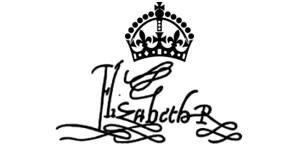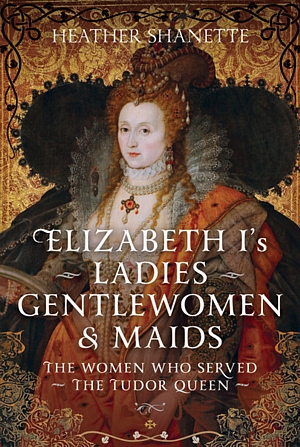
Death of Queen Elizabeth I
As Gloriana, Queen Elizabeth may have seemed to many to be immortal, but by the turn of the seventeenth century she was beginning to display very real human frailty. Life as a monarch may have been glorious, but it was also difficult, demanding and dangerous. "To be a king and wear a crown," she said, "is a thing more glorious to them that see it than it is pleasant to them that bear it", and, at almost seventy years of age, she was exhausted.
Elizabeth had always known that popularity was a fickle thing, and that an aged queen could not long command the hearts of the young who were waiting for the sun to rise on a new world. She knew that those around her were preparing for the day when her reign was over, and she was finding it increasingly hard to present herself to her people as an ever youthful figure. She was also increasingly lonely, as old servants and friends were passing away in quick succession, and the execution of her once favourite, Robert Devereux, Earl of Essex, for his rash rebellion, tormented her soul .

Elizabeth I with Time & Death
The Christmas of 1602 had been a good one at court, and just weeks before visitors had commented on how well the Queen was looking, but by the following spring, Elizabeth was seriously ill. For some time she had been complaining of aches and pains, and she may have caught a seasonal virus that turned into pneumonia, but the opinion of those who knew her was that the Queen had lost the will to live. For hours on end she would lie on cushions in her apartment, eating little and sleeping less, and she refused to be treated by her doctors. In no time at all she had become deathly weak and by the evening of 23 March 1603 it had become apparent to those around her that she was dying. The Archbishop of Canterbury, John Whitgift, was called to her bedside, and for some time he prayed for her and helped her to prepare for death.
There was still one matter that the Queen had left unresolved, the matter that had been left unresolved since the first day of her reign: the matter of the succession to the throne. However, the unspoken consensus was that James VI, King of Scotland, great grandson of Margaret Tudor, eldest sister of King Henry VIII, was the rightful heir by primogeniture. Whether or not Elizabeth named him as her heir on her deathbed, by word or by gesture, is one of history's mysteries, but it was said that she did in order to help the people accept King James as their new ruler.

The Dying Queen
As midnight approached, Elizabeth was left in the care of her women, and in the early hours of 24 March she died
peacefully in her sleep. The day was a Thursday, the death day of her father and her sister, and the day was the
Eve of the annunciation of the Virgin Mary, an apt day for the Virgin Queen to die. In Tudor times,
the 24 of March also marked the end of the year, the new year officially beginning on 25 March, so the last day of the year 1602 also saw
the last hours of the last Tudor monarch. The new year, 1603, brought a new reign, that of King James I
(VI of Scotland), a new ruling dynasty (the Stuarts), and a new era in British history as the crowns of Scotland and England were united
in one monarch.
It was with sadness that the Queen's death was announced on the streets of London and, according to witnesses, the news was
met with an eerie silence from the stunned crowd. For almost 45 years they had been ruled by Elizabeth and most people could not
remember a time without her.
A few days after her death the Queen was taken by water to Whitehall Palace, her biggest and most central residence, and she
lay in state there until her magnificent funeral on 28 April 1603. The royal coffin, draped in purple velvet with a lifelike
effigy of the Queen upon it, was taken in great procession to Westminster Abbey, and the chief mourner was the Queen's close friend and attendant, Helena Snakenborg, Marchioness of Northampton. The streets of London were full of
spectators, all come to pay their last respects to a queen who had ruled them so wisely and for so long, and when they
saw the lifelike effigy of their beloved sovereign, they wept. John Stow, who attended the funeral wrote:
"Westminster was surcharged with multitudes of all sorts of people in their streets, houses, windows, leads and gutters, that came to see the obsequy, and when they beheld her statue lying upon the coffin, there was such a general sighing, groaning and weeping as the like hath not been seen or known in the memory of man, neither doth any history mention any people, time or state to make like lamentation for the death of their sovereign."
The grief of the nation was unprecedented and was a fitting tribute to a remarkable woman who would go down in history as one of the greatest rulers of all time.

Queen Elizabeth's Grave
Westminster Abbey



































